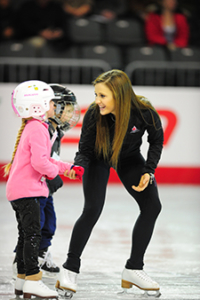Les Suprêmes synchronized skating teams to compete at 2015 French Cup
OTTAWA, ON: Canada will have two teams at the 2015 French Cup international synchronized skating competition in Rouen, France. Les Suprêmes senior and junior will compete at the event which takes place from January 30-31, 2015, and features 36 teams in senior, junior, and novice.
Les Suprêmes senior, the 2014 Canadian silver medallists, will be the sole Canadian entry in the senior category. They placed sixth at this event in 2014, and fifth in 2013. Representing Quebec, they placed sixth at the 2014 ISU World Synchronized Skating Championships. Les Suprêmes are coached by Marilyn Langlois, assisted by Pascal Denis, Amélie Brochu, and Amanda Gaiotti.
Les Suprêmes junior, also from Quebec, will be the sole representative from Canada in the junior category. They are the 2014 French Cup bronze medallists, and placed eighth at this event in 2013. The 2014 Canadian champions, Les Suprêmes junior also won silver at the 2014 Junior World Challenge Cup. They are also coached by Marilyn Langlois, assisted by Pascal Denis, Amélie Brochu, and Amanda Gaiotti.
Marion Dyke of Mississauga, Ont., will be the sole Canadian official at the event.

